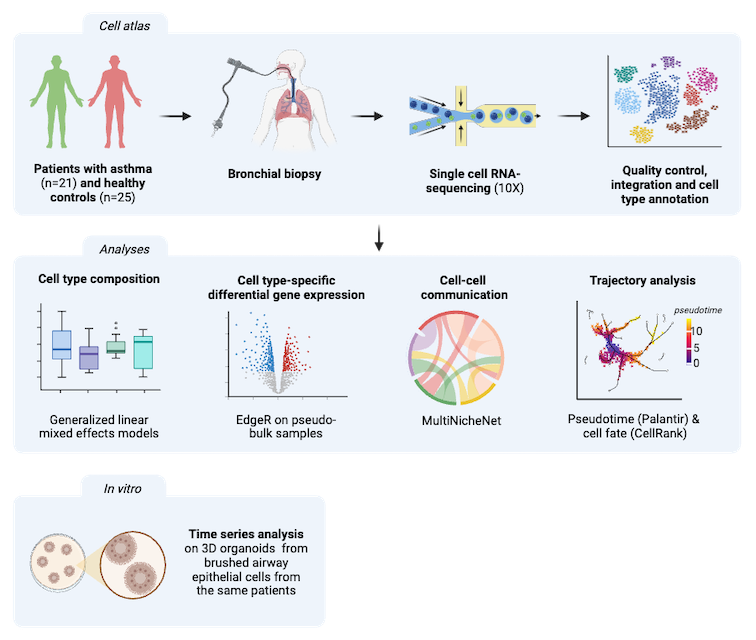Abstract
The airway epithelium is altered in patients with asthma, with reduced barrier function and goblet cell metaplasia. Recently, single cell RNA-seq has identified 15+ distinct airway epithelial cell types in the Human Lung Cell Atlas, but it is unknown whether these newly defined subsets are altered in asthma.

We generated an airway cell atlas of 240,756 cells from 46 patients with asthma and controls. Hillock-like and dying ciliated cell proportions were higher in asthma, as well as proliferating T-cells, classical monocytes, plasmacytoid DCs, DC2s and plasma cells. Trajectory analysis showed that primary bronchial epithelial cells (PBECs) display very active, ongoing differentiation and high probability to reach ciliated cell fate in asthma but not control. Analysis of 3D organoids showed cultured PBECs from patients with asthma retain increased probability of differentiation to Hillock-like cells, but not to ciliated cells, versus controls.
Our data indicate the bronchial epithelium in asthma is in continuous repair, with active differentiation towards ciliated cell fate to replenish cells lost to cell death. This loss is likely a consequence of disease not retained in vitro, while the higher likelihood to differentiate via a Hillock-like transitional cell state is an intrinsic PBEC feature in asthma. We conclude that Hillock-like cells are a key feature of the asthma airway epithelium and likely contribute to the disease process.